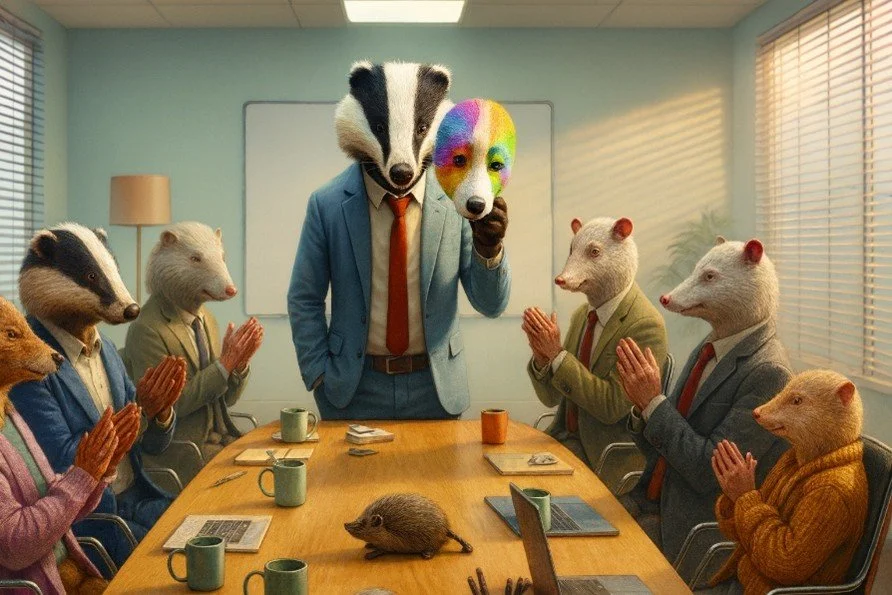3. Fail Loudly, Learn Publicly
Reframing Mistakes as Leadership Gold
There’s a special kind of silence that follows a leadership mistake.
Not the peaceful kind. Not birdsong and sunrise. More like the heavy kind. The oh no, did everyone just see that kind. The kind that makes your stomach drop straight through your shoes and into the floorboards.
I know that silence well.
Which is probably why I spent a solid chunk of my early leadership years trying desperately not to mess anything up. I thought mistakes were what you apologised for in your resignation letter.
Turns out, they’re actually where the good stuff starts.
That time I launched a project that lasted about six minutes
There was a particular initiative I once greenlit - full confidence, bold tone, catchy name, glossy slide deck - that fell apart faster than a deck chair at a rugby match.
We’d spent weeks getting it ready. We launched it on a Monday. By Friday, we were already dismantling the thing like it never happened. Staff were confused. The budget was bruised. One team member called it “a brave experiment,” which is Kiwi for “nice try, mate.”
The old version of me would have quietly swept it under the carpet. Pretended it didn’t happen. Maybe blamed a misalignment of timing or market conditions.
But instead, I did something new. I gathered the team, told them the truth and apologised. Not in a grovelling way. Just straight. I told them I’d backed something I believed in, but I’d read the room wrong. I’d made the call. It didn’t work. Here’s what I learned.
Something strange happened.
People didn’t lose faith in me. They leaned in.
Leaders who never fail are either lying or not doing anything interesting
There’s this weird, baked-in belief in leadership that mistakes are for juniors. Entry-level stuff. The more senior you get, the less room there is for error. One misstep and it’s off with your head.
That belief is rubbish.
Big ideas come with big risks. If you're not making mistakes, you're either playing it safe or quietly letting the organisation drift into beige.
The leaders I admire most aren’t the ones who avoided mistakes. They’re the ones who owned them. The ones who stood in front of their people and said, “That one’s on me. Here’s what I learned.”
That kind of honesty builds cultures where people take responsibility. Where they speak up sooner. Where they try stuff that actually moves the needle.
Because if the boss can get it wrong and live to tell the tale, maybe it’s safe for the rest of us too.
The cover-up costs more than the mistake
One of the most dangerous things a leader can do is pretend.
Pretend they knew it all along. Pretend the mistake was actually part of a bigger plan. Pretend everything’s fine when it’s very obviously not.
It’s exhausting. Everyone sees through it anyway and it quietly teaches your team that it’s not safe to fail here. That the only acceptable story is a success story.
That’s how you end up with a culture of half-truths and empty updates. A culture where things go wrong and no one says anything until it’s too late.
It’s not the failure that kills you. It’s the silence around it.
So how do you fail well?
Simple. You fail out loud.
You call it what it is. You take responsibility. You reflect on it with honesty and a bit of humour, if you can manage it. You talk about what you'll do differently next time.
You do all this in front of your people. That last bit’s the kicker.
Because leaders don’t just fail personally. They fail publicly. So, we may as well own the story before someone else writes it for us.
You don’t need to throw yourself under a bus. You don’t need to wear a T-shirt saying “Ask me about my poor decisions.” But you do need to be open, real and brave enough to model what learning looks like.
The power of public learning
Every time you admit a mistake in front of your team, you're not just showing humility. You're teaching something.
You’re showing that -
It's safe to speak the truth here
Imperfection isn’t a weakness
Learning beats blame
Growth matters more than ego
That’s powerful leadership. Not because it protects your image. But because it strengthens your culture. It turns your workplace from a theatre into a lab. From performance into practice.
Let’s be honest. We could all do with fewer performers and a few more real, fallible, learning-in-real-time humans in charge.
What’s possible?
Imagine an organisation where mistakes aren’t hidden or punished. They’re shared. Reflected on. Used as stepping stones.
Imagine a team that knows the boss won’t lose their mind over a failed attempt. That risk and curiosity are safe. That the worst-case scenario is a debrief, not a dressing-down.
Imagine the collective intelligence that grows when people stop trying to look smart and start being honest.
It all starts with one leader saying, “Well. That didn’t work. Let’s unpack it.”
Vulnerability in failure builds resilience. Builds connection. Builds momentum and it creates the kind of culture people don’t want to leave.
Because once you’ve worked in a place where you’re allowed to be human, it’s hard to go back.

